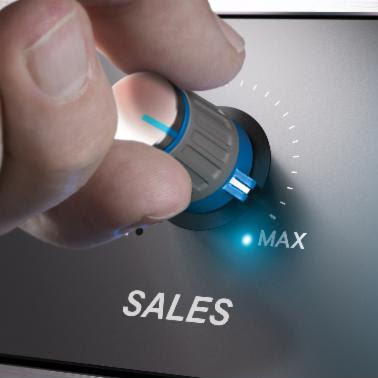Between fierce competition and lackluster economic conditions, distributors are paying more attention to how they price. Modern Distribution Management’s “Distributors’ Top Concerns in 2013” report shows that reducing costs and improving profitability is top of mind for distributors this year. Pricing is highlighted as a special area of focus in the report.
Distributors are looking to technology solutions to improve pricing and increase margin. This seems like a good idea on the surface. Distributor pricing is complex: The average distributor has thousands of customers, tens of thousands of items, hundreds of thousands of transactions. New tools make it easier to handle the scale of the pricing challenge distributors face. It’s possible to analyze hundreds of thousands of past or potential pricing decisions. With all this computing power out there, it should be easy to figure out where you can safely make more margin.
Unfortunately, most distributors are using pricing technology the wrong way.
Management makes the mistake of putting all its pricing focus on loading pricing into the system – creating pricing records, setting up matrices, segmenting this and that – instead of implementing pricing. Said another way: they see pricing data as an end to their pricing strategy instead of the beginning of it. Consider this:
- The sales force still controls most distributor pricing
- Most sales people focus on the highest volume items, purchased by their largest customers
- Sales people use general rules of thumb i.e. “mark it up 25%” to manage pricing complexity
- Industry wide, the system price is lowered by the sales person over 50% of the time
It’s easy to increase margin in your system. What really counts is making sure the pricing is actually used at order entry.
Pricing is a behavioral discipline
- Pressure from customers
- Fear of losing a sale
- Ineffective incentives
There are more reasons for sales people to ignore the pricing you load into your system than to use it. We see it all the time: A distributor installs expensive new pricing software or hires one of our pricing competitors to raise system prices and nothing happens. A year later, margin is the same or – in the worst cases – actually lower than before.
A comprehensive approach to pricing is the only way to see sustainable margin gain. Yes, it is important to analyze pricing and customer data and translate that into changed system price. That is just the beginning of the process, though. Here are some techniques that will leverage your pricing technology into real results:
- Involve sales people in decisions to increase margin
Most distributors can’t just raise system prices and mandate their use. An effective pricing strategy requires buy-in from the people who are actually going to implement it. Delivering numbers from “on high” will only create frustration and skepticism. On the converse, a sales person who is involved in how the prices are set will trust the numbers and use them.
At Profit2, when we begin a consulting project, we first work with management and sales to understand the distributor’s existing structures and customers. As the ones on the front line, your sales people can provide crucial insight into which customers and items are truly price sensitive in their business. For example, the more a customer has spent on an item and the more often they have purchased, the more difficult increasing margin will be. Sales people are experts at pricing high volume, price-sensitive items and will continue to do so. The problem is they usually leave money on the table when they price low volume, infrequently purchased incidentals.
If you use “cookie-cutter” algorithms to do a wholesale matrix increase without regard to customer specific situations, you invite sales people to resist. Don’t settle for pricing tools that simply analyze. You need tools that focus on helping sales people make better pricing decisions.
- Create the right incentives
Sales people and company executives’ financial interests are sometimes compatible, but far from identical. The reality is that when a sales person offers a lower price – out of fear of losing the sale, or because they are too busy to research – they are only shorting themselves a few dollars per order. Don’t kid yourself. A bonus plan based on profit or margin isn’t enough to overcome the fear.
I’d suggest that money isn’t the issue. Most bonus plans are fine as structured. It’s just that companies fail to show their sales people they can safely make more margin and more commission without sacrificing sales.
A good sales person by nature feels compelled to control conditions that impact their business. Your job is to set objectives for margin improvement, make specific recommendations on how to increase margin and help your sales people make informed, less emotional pricing decisions.
- Build a margin-enhancing infrastructure
From building a trusted pricing strategy to correctly training and incentivizing your sales force, achieving sustainable margin gain is more about managing behavior than using technology. There is another place, though, that technology can help: Reporting.
You can’t have a margin-enhancing infrastructure without accountability. A successful pricing strategy must include measurement of results. You and your sales people need to understand the impact of pricing changes on sales, customer relationships, profit and compensation. At Profit2, we not only help our clients analyze and recommend pricing changes, we also help them understand and communicate the impact of the pricing changes by branch, salesperson, customer and item.
Sales people need to better understand the impact of pricing decisions in order to make better decisions. Management needs to see the broad picture on how the overall team is performing and how individuals are performing. A margin-enhancing infrastructure means knowing who is underperforming and being willing to take the steps to make corrections.
The bad news is: there’s no such thing as perfect software that will solve all your pricing problems. What pricing technology can do is lay a foundation to support a comprehensive and sustainable, margin improvement strategy. Judge any pricing technology investments in light of their ability to help your sales people make better pricing decisions and understand the benefits of those decisions. It’s more work than just loading new pricing into your system or abdicating pricing to your sales people, but it’s worth a point or two of extra margin to your company.





